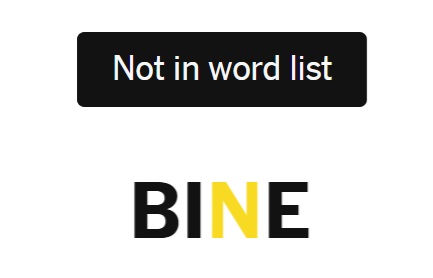WADGING is the best term so far, I love saying it!
I’m gonna do so wadging at lunch today, since my wife’s not here to yell at me. ;-)
The SpellBee game I’ve played (similar to NYT’s game) recognized TOMTIT (a New Zealand bird) in a recent game but didn’t recognize SKINK. Curious.
Has anyone forwarded a link to this discussion to the game’s editors yet? I bet they would enjoy it.
I especially liked the suggestion that they strike up some kind of deal with iNat contributors for the bee photos!
Wow, this one kind of surprised me because it’s a botanical term familiar to me, who’s scared of botanical terms.
Bracts are basically modified leaves that are associated with reproductive structures. A well known example is the large, papery, brightly-colored bracts of Bougainvillea plants, which most of us mistake for petals. The flowers are small and white.
Lianas are woody vines common in tropical forests (though they can also be found elsewhere). They use trees as supports, sometimes strangling their hosts in their quest for light. Liana is not a taxonomic category, rather it describes the habit of the plant, similar to “tree” or “shrub”.
Bine: a twining stem or flexible shoot (as of the hop)
also a plant (such as woodbine) whose shoots are bines
[definition from Merriam-Webster app]
Example: Humulus neomexicanus, western hop
https://www.inaturalist.org/observations/243566894
I’ve never played but now I will, haha. The very first word I entered wasn’t in the dictionary – not a nature-related term but I am very indignant that fain is not in the dictionary, either.
bine
noun
: a twining stem or flexible shoot (as of the hop)
also : a plant (such as woodbine) whose shoots are bines
(https://www.inaturalist.org/observations/220407829)
Orange Honeysuckle, Lonicera ciliosa.
Haha whoops, you beat me to bine!
Two more today:
Pinna:
– a projecting body part (such as a feather, wing, or fin)
– a leaflet or primary division of a pinnate leaf or frond
https://www.inaturalist.org/observations/270271322
https://www.inaturalist.org/observations/199414025
And to go along with “PIPPED” that was previously posted:
Pipping:
– [intransitive] breaking through the shell of an egg
– [transitive] breaking open (the shell) in hatching
Tule: a bulrush such as Schoenoplectus or Scirpus species. In Mexico also a common name for cattail, Typha species.
Schoenoplectus californicus: https://www.inaturalist.org/observations/158336708
Typha domingensis: An atypical cattail inflorescence, with two female flower spikes below the male flower spike: https://www.inaturalist.org/observations/248074582
gemma
noun
gem·ma ˈje-mə
plural gemmae ˈje-ˌmē
: bud
broadly : an asexual reproductive body that becomes detached from a parent plant
https://en.wikipedia.org/wiki/Gemma_(botany)
https://www.inaturalist.org/observations/221899793
Lunularia cruciata with gemmae
In central California, pronounced too-lee ![]()
A cria is a juvenile llama, alpaca, vicuña, or guanaco.
An observation of a guanaco cria: https://www.inaturalist.org/observations/148869023
Altricial describes species which have underdeveloped young at the time of birth/hatching. This is in contrast to precocial, a term for species which have relative mature young, usually able to move, thermoregulate, and eat independently at or shortly after birth/hatching.
An observation of young from an altricial species (eyes sealed shut, no feathers): https://www.inaturalist.org/observations/278755568
Compared to young from a precocial species (eyes open, fully feathered): https://www.inaturalist.org/observations/40049882
These are some deep cuts, @jwidness!
I would have been so disappointed to enter such a banger word and not have it accepted!
Liana is not accepted?
But lantana is accepted?
Sorry about the spoilers! I read that after!
I removed the image you posted to avoid spoilers for other readers of the thread
Sorry!
I was amazed when PINNIPED was accepted.





















